This article will explain what smart waste management is and how it can impact our lives.
The amount of global waste is expected to register 4 billion tons by 2050, twice as much as the amount in 2016. The rapid growth is associated with the growth of urban populations and the rise of consumer culture over the past few decades, neither of which is likely to slow down anytime soon. To decrease the pressure that it posts on the environment and the waste collection service, communities around the world are transferring to Smart waste management technology as well as solutions.
1. What is smart waste management?
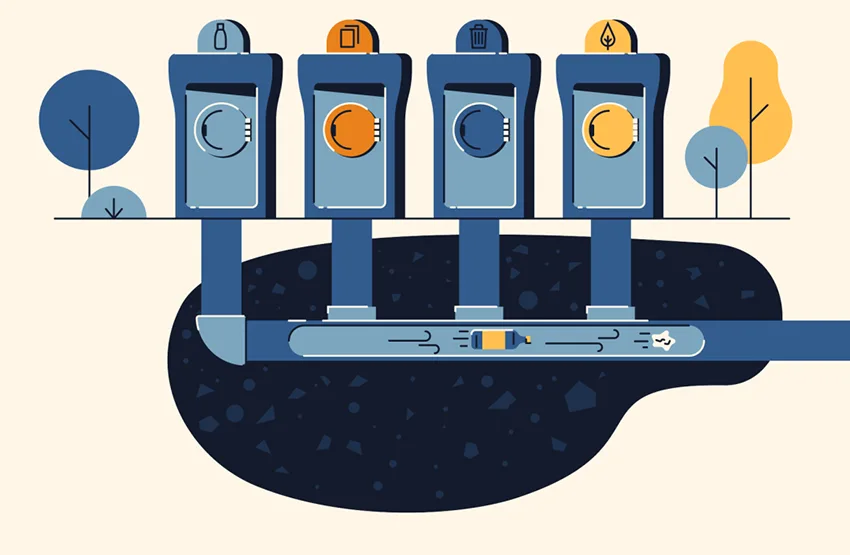
Smart waste management stands for any systems which utilize technologies to achieve the efficiency of waste collection, the saving of money and environmental protection. Most of the systems are equipped with the Internet of Things (IoT), which is the monitored technology that gathers and tracks real-time data to improve waste collection and boost innovation in the future.
2. IoT technology in smart waste management Systems
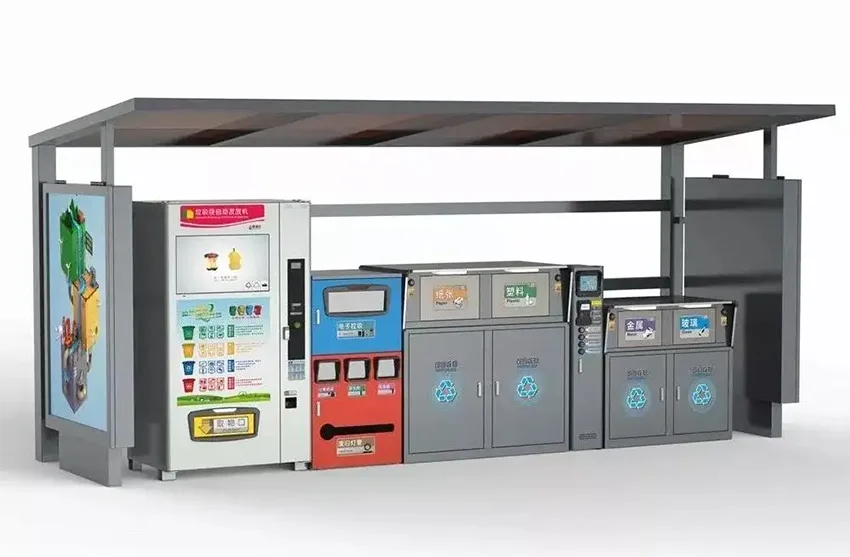
Locating Function of LBS
Waste collection equipment is distributed in different areas of a city, and users can quickly locate the nearest smart garbage disposal points in the surrounding areas using the application mini program, Then they can be guided to the area located by navigation functions so that they can quickly put out the garbage.
Prompt of Waste Sorting
The complete waste classification database on the APP contains hundreds of types of daily garbage. When you don’t know which garbage bin can be thrown in, you can directly check the results in the search box. Users can also use the APP to scan the garbage to be informed of the type of garbage to be put out, educating users on garbage classification and reducing the error rate when throwing away garbage.
Face Swipe Function of Waste
Residents can make one-stop delivery of all types of garbage by swiping cards, faces and codes, realizing the “precise binding” of garbage classification quality and residents’ identity. When throwing away waste, users can choose different categories, and get points or red packet rewards for intelligent weighing in the waste recycling category. What’s more, it also provides a door-to-door recycling service, which is vital to enhance the efficiency of resource utilization.
Environmental Information Push
It can automatically update the daily data of fine particulate matter, respirable particulate matter, sulfur dioxide, nitrogen dioxide, ozone and carbon monoxide in the user’s areas. What’s more, it evaluates the weather conditions comprehensively and pushes some tips to protect the environment, save energy and reduce emissions to raise people’s awareness of protecting the environment and help users do individual protection and enjoy a healthy life.
Integral Mall
Users are rewarded with points for correctly delivering garbage, and they can view their accumulated points online and use them to exchange for small gifts of corresponding value.
3. What are the 5 stages of waste management?
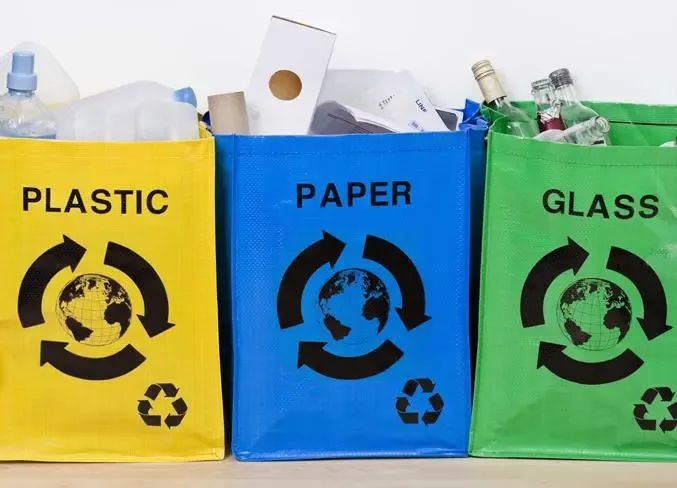
The five types of waste include composted waste, recyclable waste, construction waste, hazardous waste and incineration waste.
Composted waste is organic fertilizers made by adding substances that promote the decomposition of organic matter, mainly plant materials, under the suspicion of gas in flooded water. It is also the general term for grass pond mud, riddle fertilizer, cellar fertilizer, etc. All of them are made of straw, weeds, leaves, green manure, rice straw and household garbage as raw materials, mixed with a certain amount of human feces and urine, stable fertilizer, river and pond mud, etc. Then it is composted in a pit under flooding. Organic matter decomposes under suspicious air conditions, with a higher humification coefficient and less nutrient loss.
Recyclable waste is the waste that is able to be recycled. Paper, cardboard, glass, plastic, metal, and synthetic (Kunststoffen) packaging that can be recycled in its own right or by materials, and other materials such as newspapers, magazines, advertising flyers, and other clean paper can all be recycled. In addition, a package with a green label is part of a dual system that requires payment and it belongs to recyclable waste.
4. How does smart waste management work?
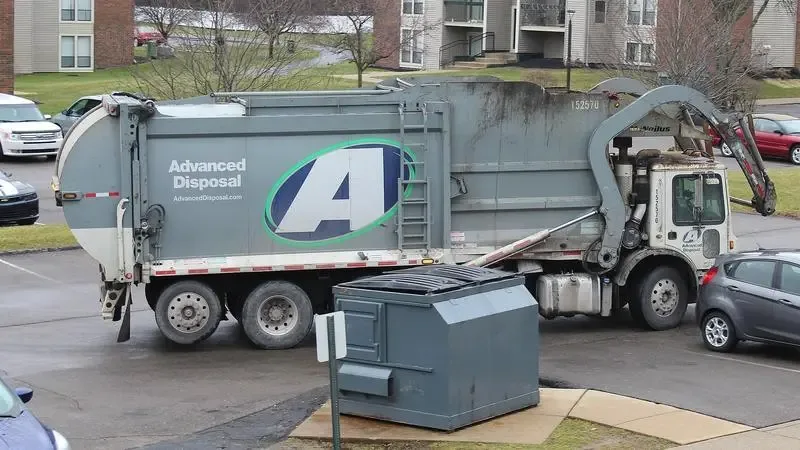
Through a variety of identification methods (APP, face recognition, low-carbon card) and other management means, the garbage will be thrown into the bin, and the system will credit the user’s account with the corresponding weighing and points rewards each time, so that the system managers can understand the garbage classification and points and make the realization of the systematic and intelligent management of garbage classification and points system come true.
Management function of Devices
1)Check the information and status of smart recycling devices (whether it is full, positioned, initiated or connected to the Internet)
2)Check the information and status of smart deliverers (whether it lacks items, positioned, initiated or connected with the Internet, also the condition of inventory)
3)Records of waste delivery, mainly about checking the waste delivery of recycling boxes.
5. Why do we need a smart waste management system?
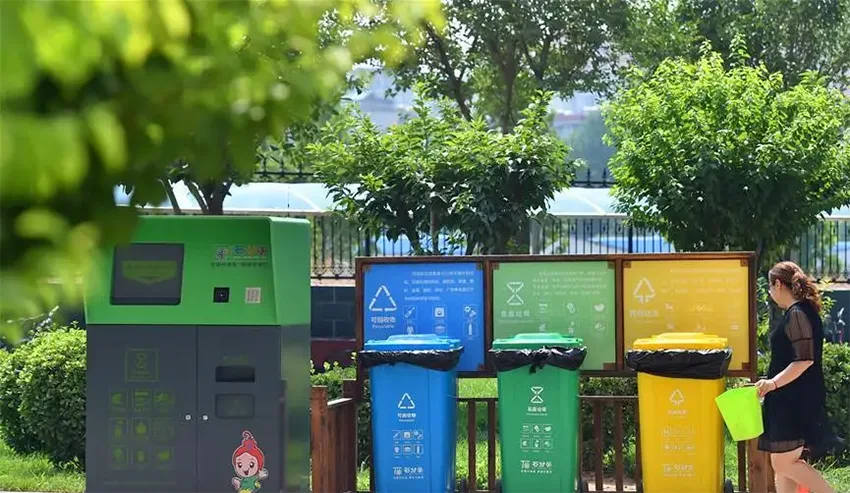
Unmanned Smart Waste Sorting System
No man is needed to guard the system whether it’s for customers to drop off their garbage or for cleaners to maintain it.
No Special Bags for Smart Waste Sorting System
No special bags are needed for a smart waste sorting system, which can track the people who drop off the waste through weighing and ID identification pairing.
Precise Calculation for Smart Waste Sorting System
The intelligent waste sorting system can detect the internal condition of the outer box to ensure the normal operation of the equipment.
Auto Monitoring for Smart Waste Sorting System
An intelligent garbage sorting system can automatically monitor the real identity of the garbage throwers. Also, it can check whether the net weight of the garbage and the outer box is full as well as whether the equipment is normal.
Cloud management of smart waste sorting systems
The data of users and cleaners will be uploaded to the cloud to assist the users and cleaners to do performance appraisals.
Media popularization of smart waste sorting systems
smart screens and waste bins can be used to launch campaigns about raising awareness of environmental protection.
6. Smart City Waste Management
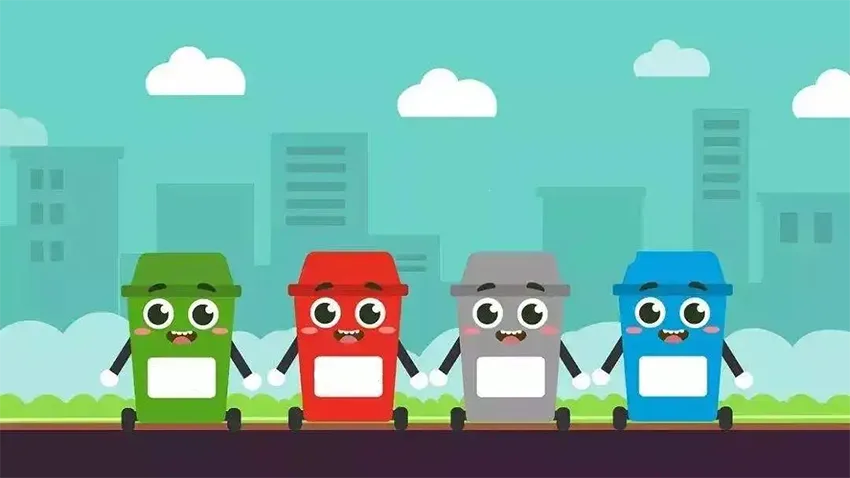
Climate change caused by global warming has prompted governments to decrease their carbon footprint in line with the United Nations 2030 Sustainable Development Goals. This will force municipalities to utilize intelligent waste management technologies to optimize waste recycling as well as collection.
Parts of smart waste management solutions include:
- IoT platform
- Gateways
- Sensors (endpoints)
- Mobile and web applications
How an IoT waste management solution works
Modern bins are equipped with sensors to monitor their filling levels, which can use the GPS, motions, lights or a vibration sensor to detect physical changes, temperature and position changes. The gateway sends the data collected by the sensors to the IoT platform, which in turn processes the raw data into actionable insights. The municipality receives the insights through its mobile or web-based platforms and uses them to optimize vehicle waste collection routes.
Strengths of smart bin technologies in waste management
- Reduced operational costs: The real-time information obtained from intelligent bins helps optimize vehicle routes, thus saving human resources and fuels.
- Unattended bins: Sensors detect the filling level of the bin and notify the authorities via cellular signals when the garbage can is close to being full.
- Data analysis of waste generation: Smart waste management solutions combine with a data analysis platform that can inform the authorities of a waste generation pattern and a future pattern.
- Carbon footprint reduction: IoT allows for route optimization, thus reducing fuel consumption and carbon footprint.
7. What is the equipment being used in smart waste management?
Smart garbage bin
When people have their own waste sorting devices, they don’t always pay attention to sorting their waste into the proper waste or recycling bins. To reduce improper recycling classification, the Polish company Bin-e has developed an intelligent bin that utilizes an artificial intelligence-based object recognition technology to automatically classify recyclables into different compartments. After the waste sorting is finished, the machine compacts the waste and detects how full every bin is. Smart bins eliminate human errors in the initial sorting process, making material handling at recycling facilities faster and easier. This can decrease waste management costs by up to 80% and significantly improve the working efficiency of staff.
The Sensor of waste level
Households and businesses across the country rely on regular garbage collection services to dispose of their waste. Weekly services have been existed for many years but they are not usually the most efficient options. To minimize unnecessary trips to and from the landfills, enterprises and communities install sensors that detect waste level in a bin or a dumpster of any dimension. These devices are helpful to gather and store data on filling levels, enabling the collection services to forecast how often a bin is emptied. This is also useful to protect a public container from overflowing and polluting the areas.
Artificially Intelligent Recycling Robot
A recycling center play critical roles in decreasing the amount of waste that ends up in a landfill and a waterway every year. However, a decreased workforce during the COVID-19 pandemic has made it difficult for a lot of centers to keep pace with demands. Fortunately, a recycling robot powered by artificial intelligence (AI) can narrow several gaps. The robot is designed to accurately detect and classify recyclable materials, boosting efficiencies and decreasing the demand for manual labor. Over time, this not only saves money for recycling centers but also help divert materials that will otherwise go to landfill.
Weighing Facilities in Waste Trucks
Similar to waste level sensors, weighing devices installed in waste trucks are conducive to predicting filling levels and decreasing waste-collection trips. They do this through the measurement and storage of a weight of waste container and then taking use of the data to predict filling levels as time goes by. Cities can utilize the technology to achieve more accurate predictions of how often they need to dispatch a truck and lower annual collection costs.
Pneumatic Sewer Pipe
As the population in urban areas increases, the need for waste management solutions that can cover increasing amounts of waste increases. Several cities are responding to this challenge by installing pneumatic waste disposal bins connected to a lot of pipes below the ground. The waste is piped into a waste collection plant where it can be classified or hauled away. The system removes the demand for traditional waste collection, lowers energy costs and enhances overall efficiencies.
Solar-powered trash compactor
To enhance waste-collection efficiencies and cut trips to and from the landfill, the manufacturer Ecube Labs has desgined a solar-powered trash compactor that has 5 times the capacity of the traditional dumpsters. The devices compact waste as it accumulates to boost bin capacities and gather and transfer data on filling and collection times to simplify the collection processes.
Electronic Waste Collection Kiosk
Improperly disposed of e-waste can be bad for both humans and the environment. Fortunately, a lot of enterprises and organizations have launched an e-waste recycling program that recycles and even reimburses old electronic equipment. ecoATM is a smart recycling company that adopts the idea further by developing a series of e-waste recycling kiosks that enable you to exchange your electronics for cash on the field. While they won’t often provide cash with damaged or destroyed devices, they recycle phones, tablets and MP3 players in any situation and make sure they can be recycled correctly.
Recycling Applications
Sorting contaminated waste is one of the biggest difficulties facing recycling centers. To limit the amount of non-recyclable materials entering these centers, organizations have released applications such as RecycleNation and iRecycle to make it easier for individuals to recycle. The applications offer users with information about the recycling rate, center positions, and thorough materials lists to assist users to choose which items can be recycled.
8. Smart Waste Management Applications
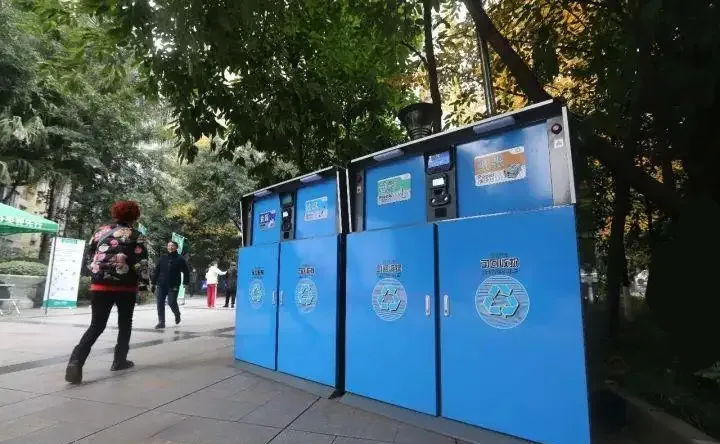
Ecube LABS——CleanFLEX Liquid Level Sensor
The CleanFlex waste management solution has enabled waste collection companies to enhance operational efficiency by more than 50%. Their solar-powered, eco-friendly trash compactor has eight times the trash capacity of a standard dumpster.
They installed fill level sensors to detect bin filling levels and send real-time information to a cloud-based data analysis and monitoring platform. The increased disposal capacity decreases the frequency of inspections and minimizes the carbon footprint
Bin-e——Automatic IoT Management System
Bin-e is a waste management system developed by a Polish company. The system is mainly used in waste sorting. It features a filling level control, data processing and AI object recognition to make waste sorting more effective.
The IoT-based bin can classify and identify waste by categories: metal, plastic, paper and glass. It can even notify the collectors of the filling level for each category.
Evreka–Waste Management System
Evreka, whose headquarter locates in Turkey, installs industrial-grade sensors on bins that are shockproof, heat-resistant and waterproof. These sensors gather environment data, such as filling levels and temperatures and then transfer this data to the servers in the cloud for processing. This data is finally applied to plan collection frequencies and optimize vehicle routes.
In short, municipalities can utilize IoT-enabled waste management solutions to lower costs, increase customer service and boost operational efficiency. IoT technology is truly becoming more ubiquitous and is helpful to make waste management more economical and efficient.
9. Smart Waste Management Solutions
(1) Facial Recognition
Automatic acquisition of resident identity information through face recognition cameras
(2) AI Identification of Waste
After putting perishable waste into the bucket on the weighing table, the gravity sensing device is triggered to obtain the weight of the waste.
(3) Weighting and Measurement of Weight
To monitor and leave evidence of users’ non-compliant delivery behaviors so that administrators can remind and educate them.
(4)Video Monitoring
Residents can easily and quickly achieve real-time display through the electronic display to understand the results of this put perishable waste classification
10. Smart waste management Software system
The nine software systems of Community intelligent garbage classification application scenarios focus on the information digital management services of garbage classification.
1. Mobile phone public welfare publicity system
2. Automatic vending machine system
3. Garbage sorting intelligent supervision system
4. Garbage disposal system
5. Ranking and points reward & punishment system
6. Video advertising system
7. Automated intelligent management system
8. Convenience service system
9. Cloud service management backend
11. The future trend of smart waste management
(1) Smart sorting robot
The intelligent garbage sorting industry in each country is in the early stage of development, and the level of sorting intelligence is low compared with Japan and Finland, which have already reached large-scale commercialization. Therefore, enterprises in each country can enhance profitability and save manpower and R&D costs by means of technology citation.
The efficiency of intelligent sorting robots is two times that of manual sorting, and the sorting accuracy rate is as high as 95%. With the change and iteration of visual recognition technologies, the future development trend of the industry will be dominated by intelligent sorting robots.
(2) The emergence of the Leachate industry
With the increase in the amount of residential household waste, the amount of social food waste and the improvement of intelligent waste classification technologies, also in the context of the increased introduction of environmental protection policies, the demands for waste leachate filtration treatment industry in various countries has increased. Intelligent waste classification of high-efficiency and low-cost treatment of domestic waste volume of storage can produce a large amount of waste leachate, with the Internet of Things, machine vision classification and other AI technologies. The growth of intelligent waste classification market size will give rise to greater leachate filtration treatment demands.
















